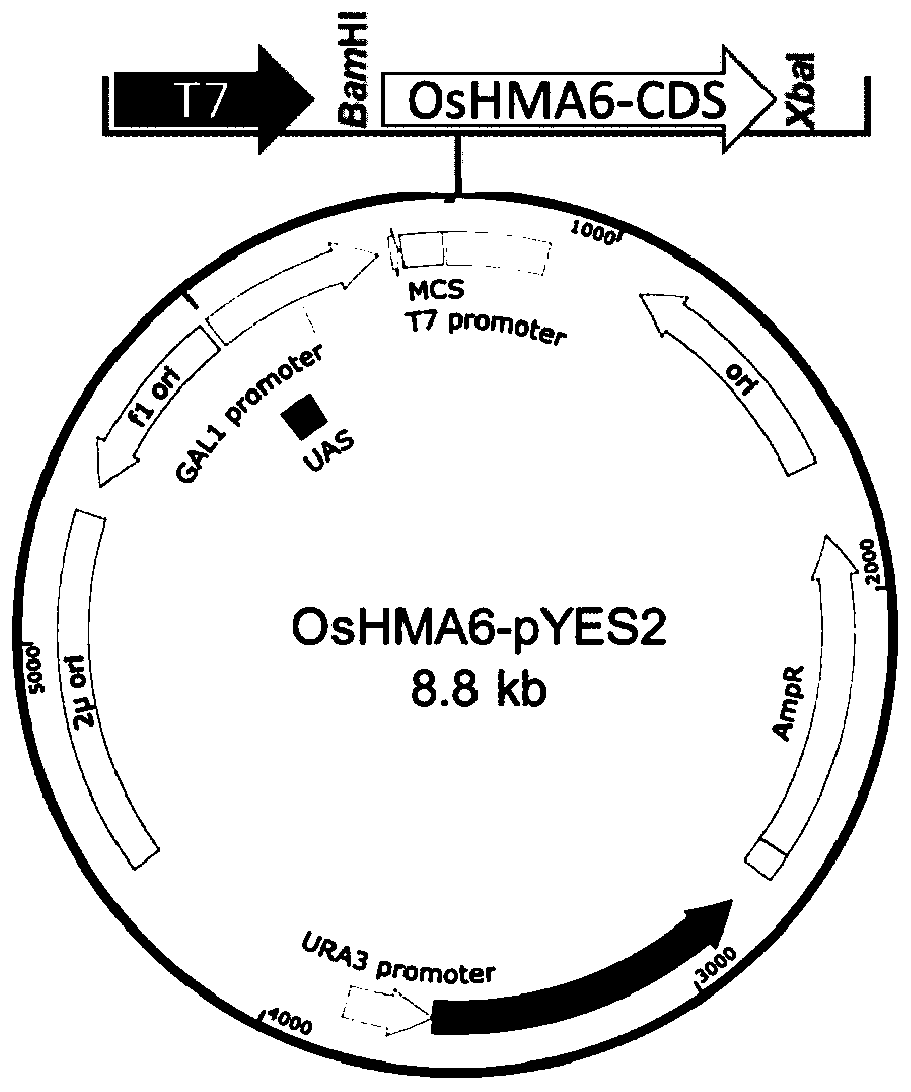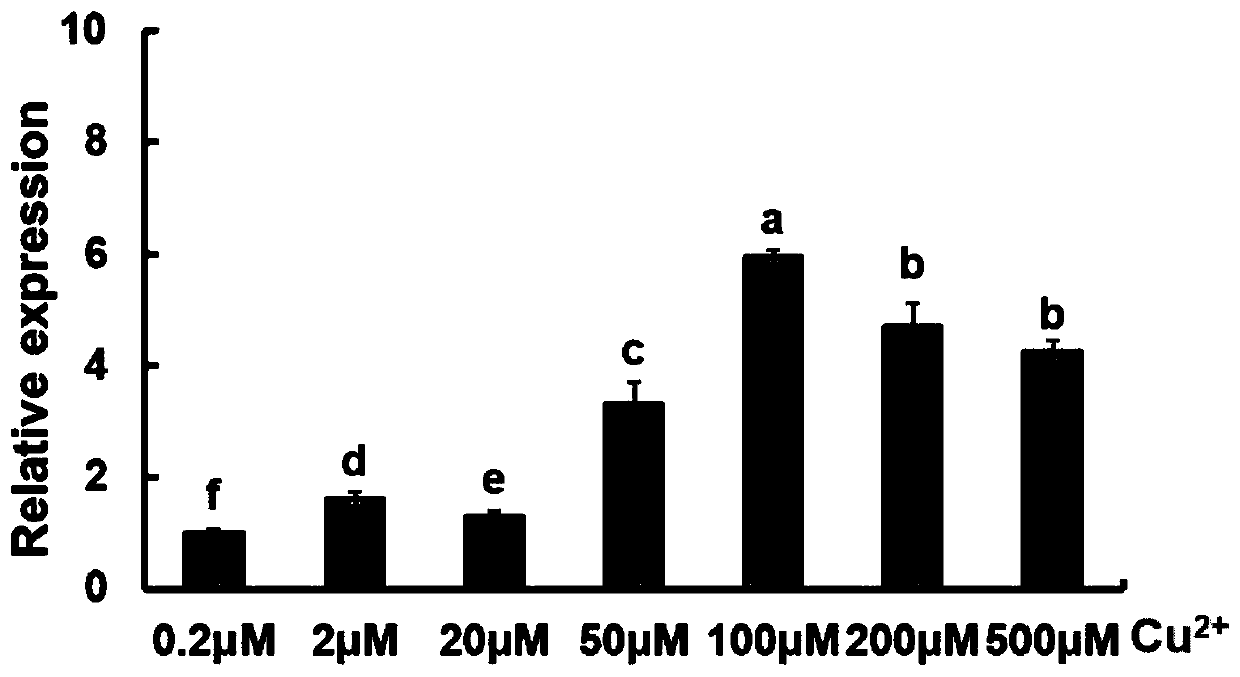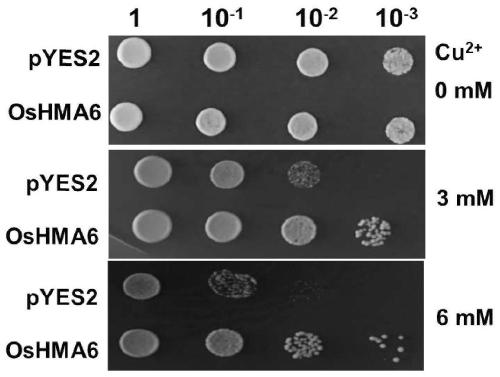Application of oryza sativa L. heavy metal transport protein OsHMA6 on aspect of lowering Cu poison
A heavy metal and rice technology, applied in the field of genetic engineering, can solve the problems of biomass reduction, plant toxicity, etc.
- Summary
- Abstract
- Description
- Claims
- Application Information
AI Technical Summary
Problems solved by technology
Method used
Image
Examples
Embodiment Construction
[0018] 1. Cloning of rice gene OsHMA6 sequence
[0019] 1) Extraction of total RNA
[0020] Rice (Wuyunjing No. 7) seedlings grow to the 3-leaf stage, treated with 0.2mM nitrate nitrogen for 6 hours, immediately take the roots and quickly put them in liquid nitrogen for cryopreservation, weigh about 0.1g of roots, and grind them with liquid nitrogen , grind fully and add to a 1.5ml centrifuge tube, quickly add 1ml Trizol reagent (purchased from Invitrogen, USA), shake well and oscillate, and extract total RNA.
[0021] 2) Cloning of the full-length CDS of the OsHMA6 gene
[0022] The CDS sequence of the rice OsHMA6 (Os02g0172600) gene was retrieved from the gene database of the rice database (Rice Annotation Project database, https: / / rapdb.dna.affrc.go.jp / index.html), and primers were designed with the software Primer 5.0 Sequence (below), the full-length CDS sequence of OsHMA6 was fished out from the tissue cDNA library.
[0023] P1:5'-ATGGCCCATCTCCAGCTCACGCCGC-3'(SEQ ID N...
PUM
 Login to View More
Login to View More Abstract
Description
Claims
Application Information
 Login to View More
Login to View More - R&D
- Intellectual Property
- Life Sciences
- Materials
- Tech Scout
- Unparalleled Data Quality
- Higher Quality Content
- 60% Fewer Hallucinations
Browse by: Latest US Patents, China's latest patents, Technical Efficacy Thesaurus, Application Domain, Technology Topic, Popular Technical Reports.
© 2025 PatSnap. All rights reserved.Legal|Privacy policy|Modern Slavery Act Transparency Statement|Sitemap|About US| Contact US: help@patsnap.com



